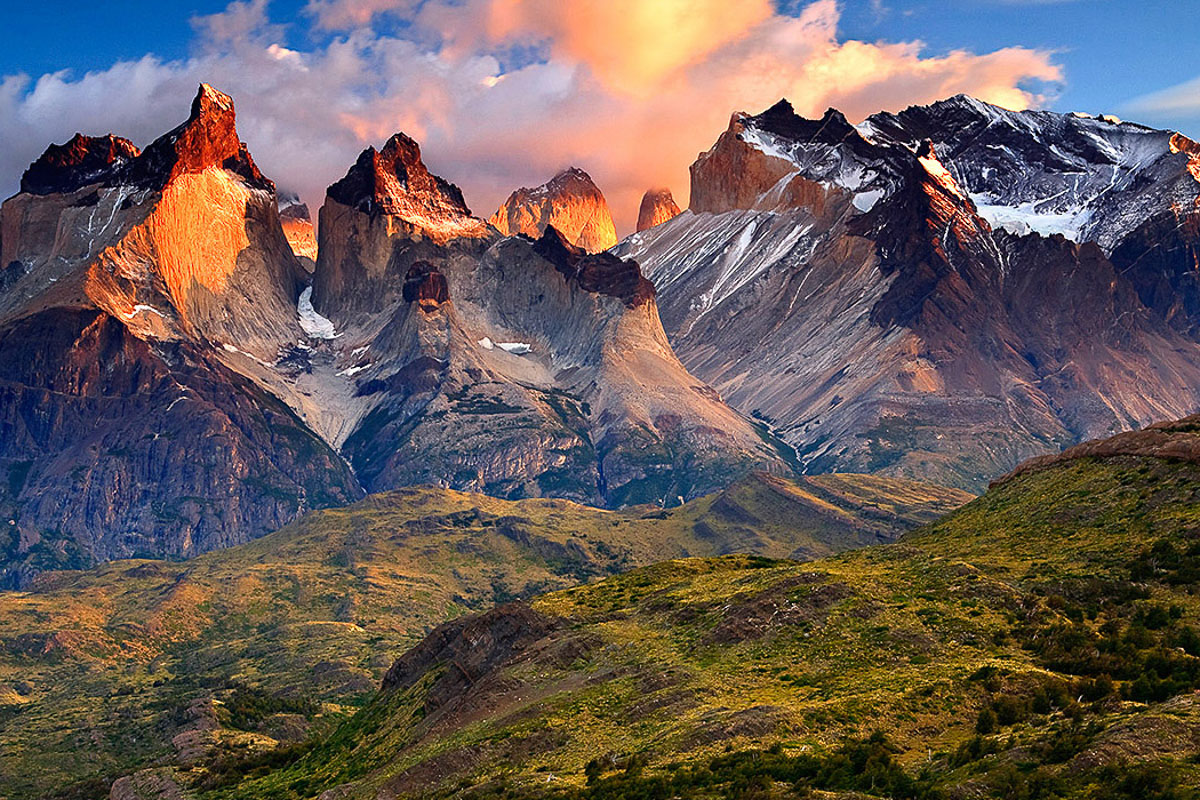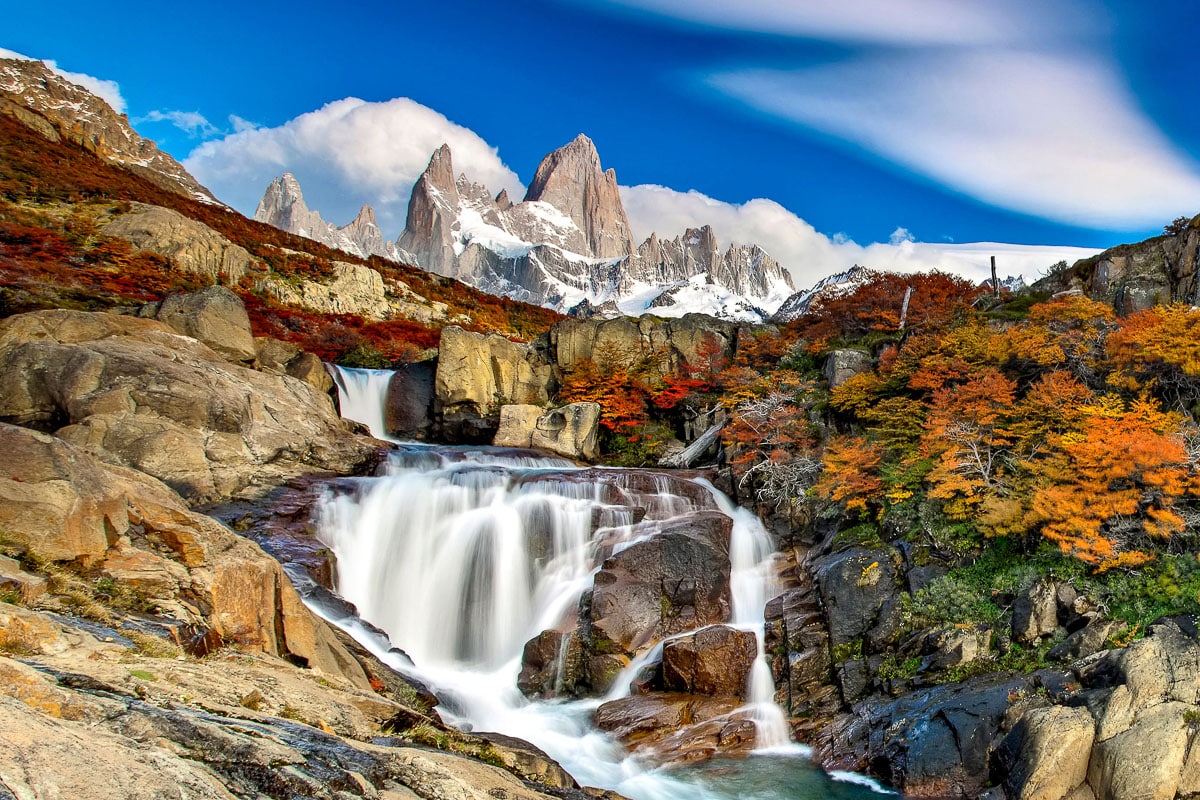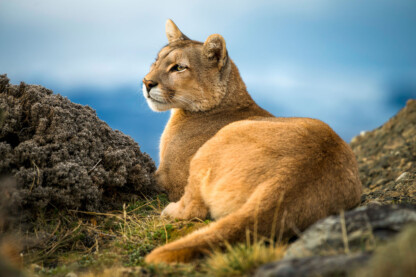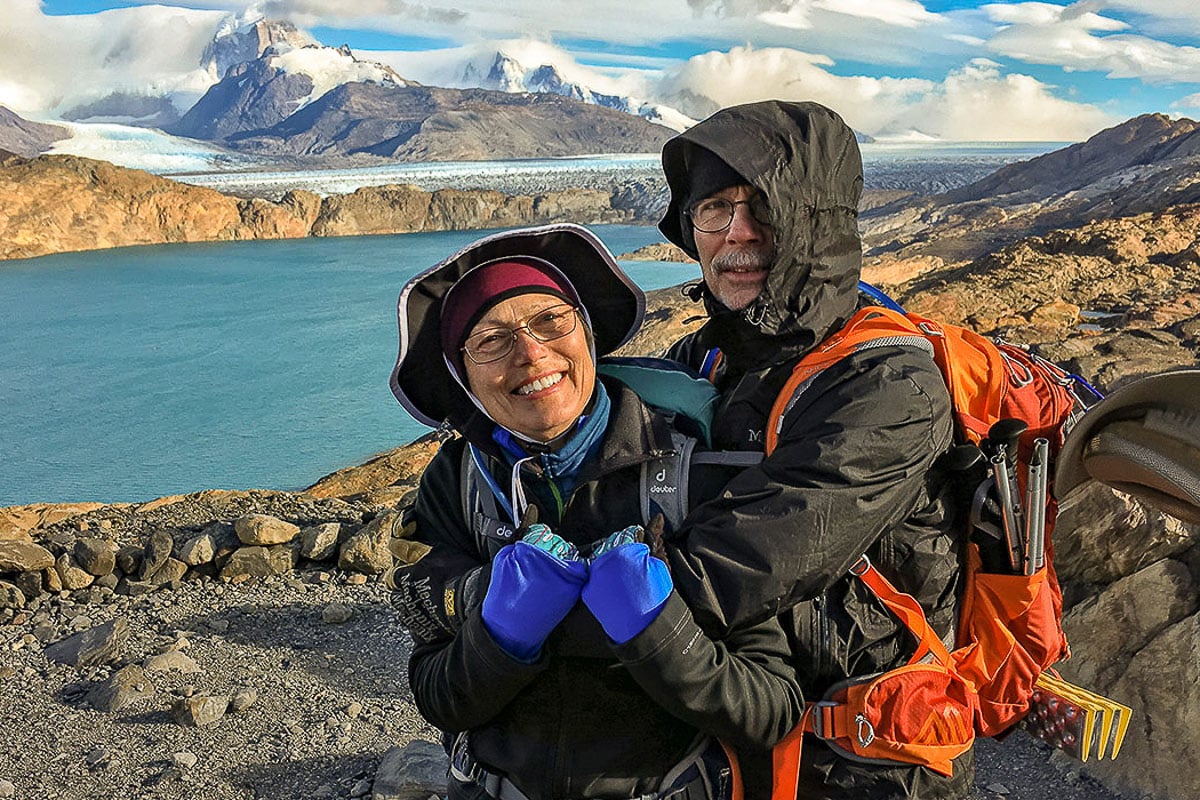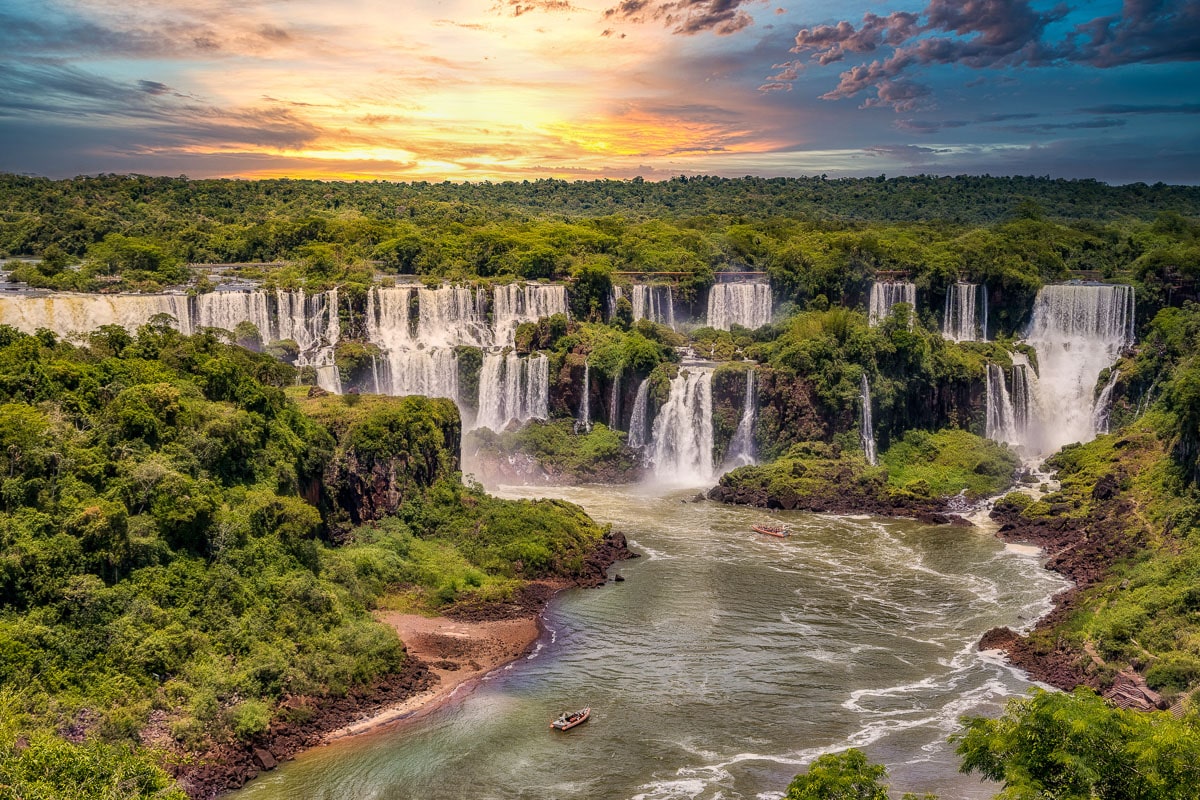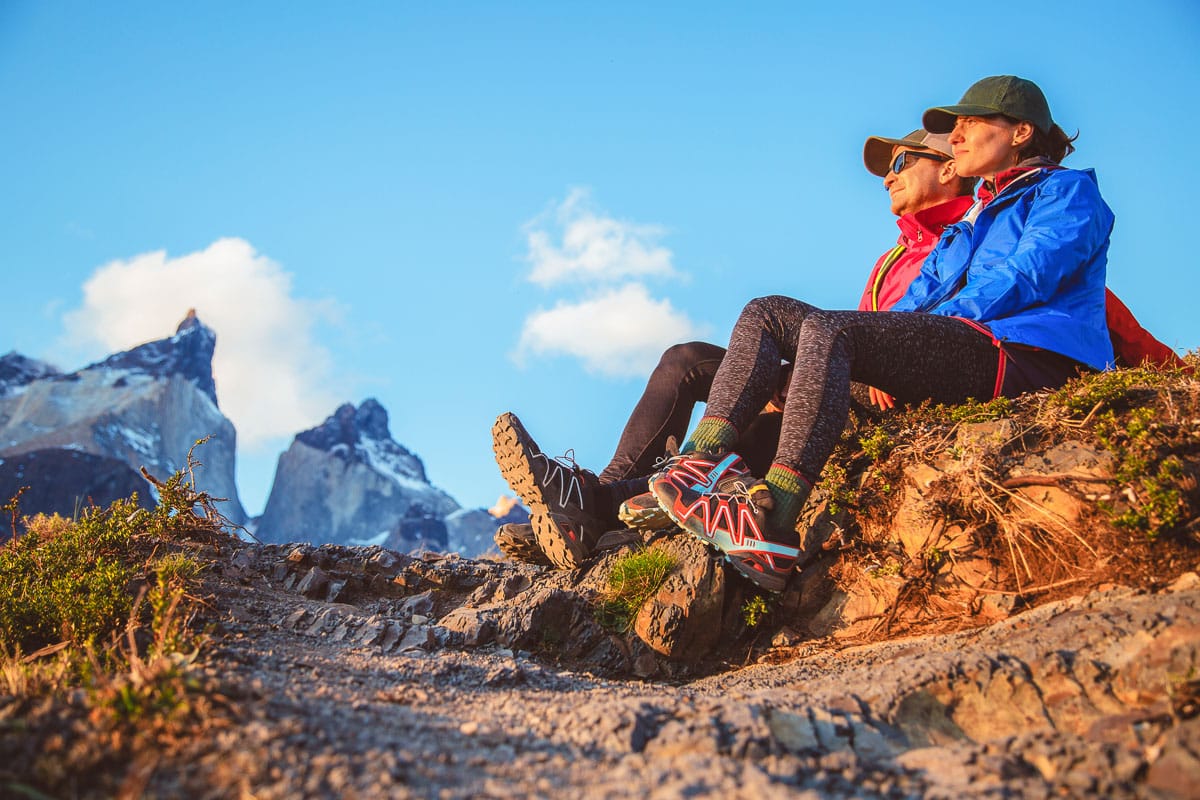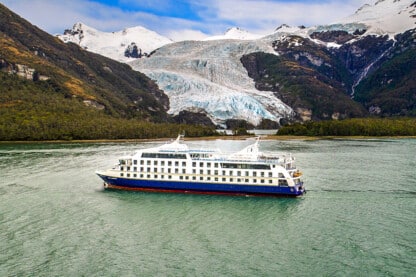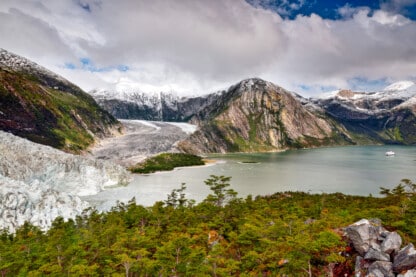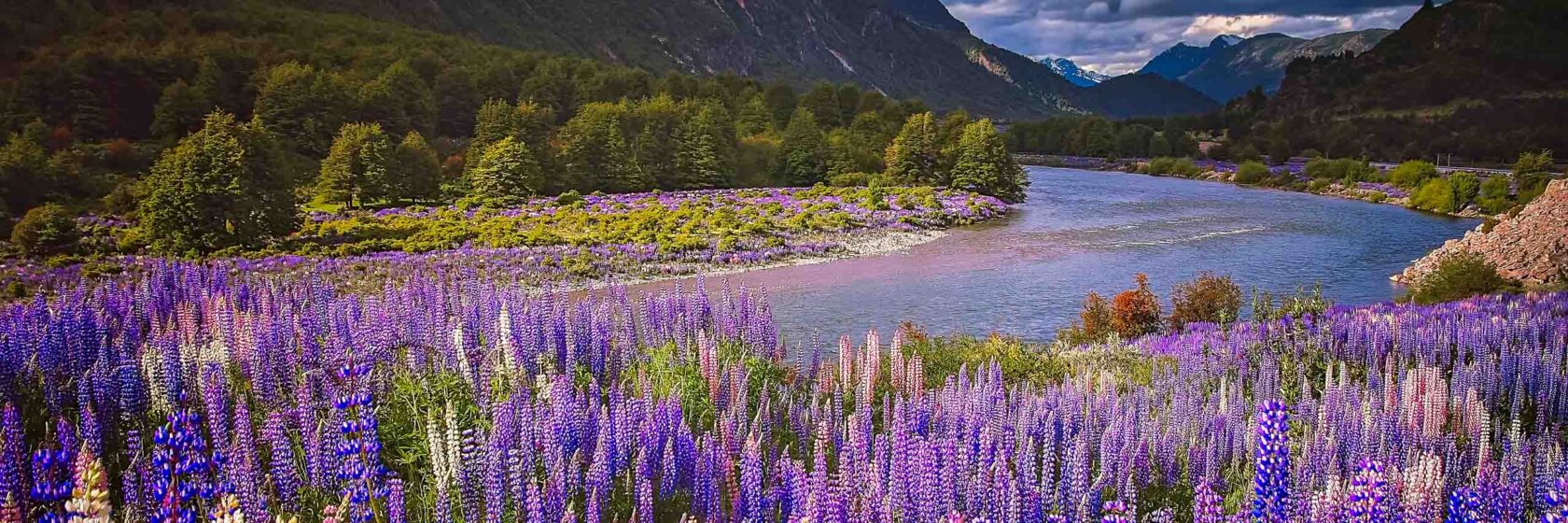
Patagonia
When is the Best Time to Visit Patagonia?
The best time to visit Patagonia is in the spring, summer, and fall, stretching from November through March. These months promise mild temperatures and long days of daylight. With its deep southern latitude, you might expect Patagonia’s weather to be more “polar” than it really is, but its austral summer temperatures are relatively moderate. Temperatures rarely drop below 40° and will usually reach into the high 60s and low 70s during the day. November (spring) is blessed with wildflowers and March (fall) beckons the start of spectacular foliage.

Keep in mind that the weather can change drastically, no matter the time of year. Enormous, unbroken stretches of ocean to the west and south of the tip of South America leave the Patagonian Andes exposed. Rain, sleet, and snow can occur at any time—perhaps just a few hours before or after sunny skies and 70° temperatures. Winds circling the globe between latitudes of 40°S and 60°S also have little obstruction, making spells of strong and persistent gusts (with speeds of, on average, 9-13 miles per hour) almost inevitable on any Patagonian journey. Prepare for this by wearing layered clothing and always having rain and/or wind protection handy.
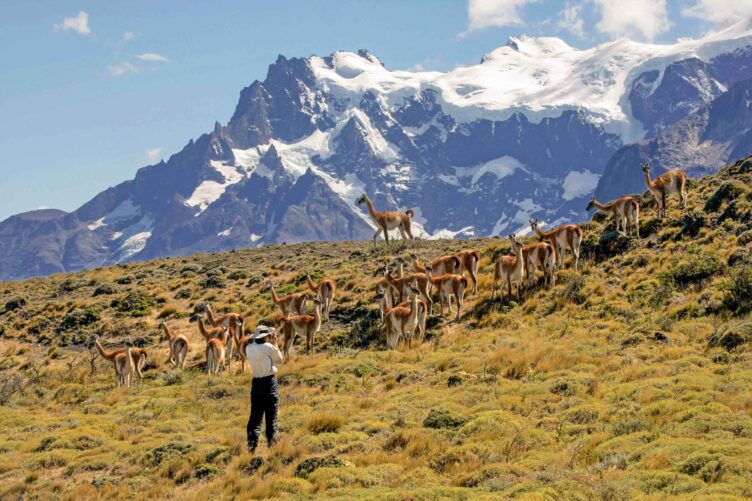
November
The start to spring has ideal shoulder-season conditions, with longer, warmer days that average temperatures in the high 50s, and relatively fewer people at the region’s most iconic sites. Plus, dazzling wildflowers are in bloom and baby animals are out and about. Join us on one of six group and private journeys, which kick off in spectacular fashion this month.
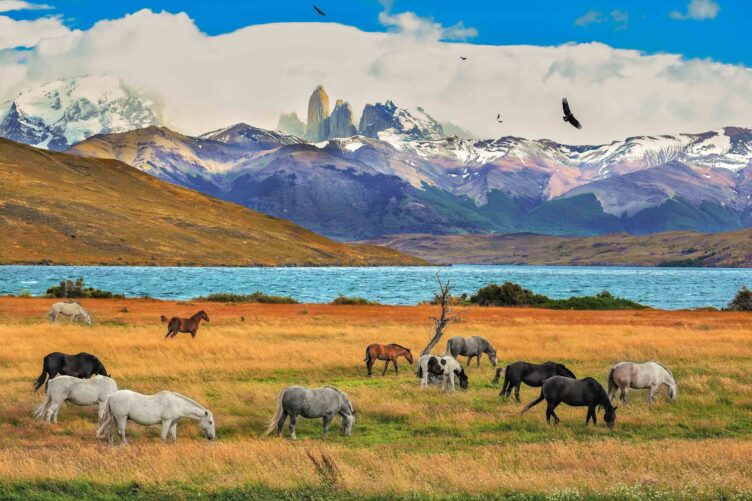
December
Clear skies, balmy temperatures, and lush landscapes that have recovered from the winter chill usher in the summer season, which is a great time to hike both Argentina’s Los Glaciares and Chile’s Torres del Paine, as well as spot chicks hatching in the penguin colonies along the fjords of Tierra del Fuego.
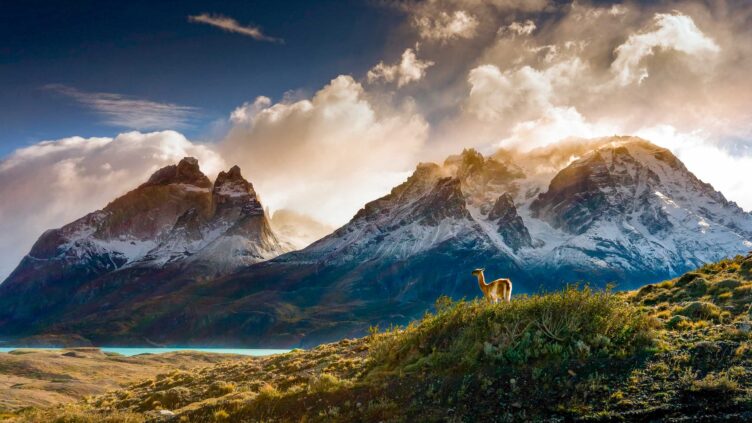
January
Patagonia enters the height of its summer, when warm temperatures and an average of 16 hours of daylight make for full days of exploration. Along with perfect hiking weather that averages the 60s during the day, this time of year is also when penguins begin nesting, one of many wildlife-spotting opportunities on WT’s expeditions.
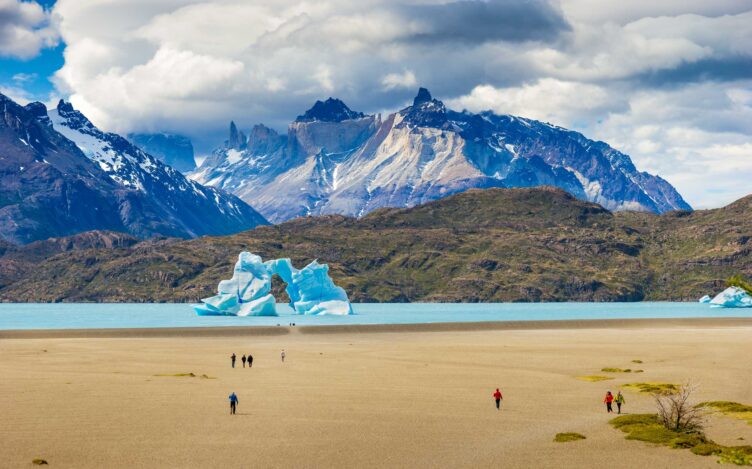
February
Similar to January, this month is an ideal time to experience all that Patagonia has to offer, from hiking in Los Glaciares and spotting pumas in Torres del Paine to cruising the fjords of Tierra del Fuego. The region’s fierce winds continue into late summer—expect average speeds of 9-13 miles per hour, which can occasionally gust much higher—so be sure to pack layers.

March
The start of autumn means landscapes shrouded in fall color, fewer crowds, and milder winds. If you prefer cooler hiking conditions, March is a great time to join a WT expedition, as daytime temperatures hover in the 50s and many of the region’s most popular sights will have quieted down.
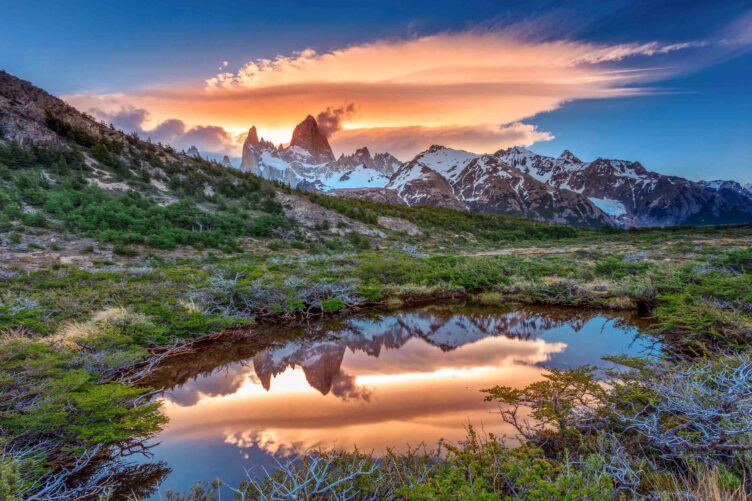
April to October
Short, cold days and heavy snowfall command Patagonia’s winter months, which are severe enough that most attractions, lodging, and restaurants will shut down at this time.
Learn More
Talk to an Expert
Our Latin America Specialists know every detail about our Patagonia trips. They will be happy to answer any questions and help you choose the journey that’s right for you. Contact us to learn more or book your trip today!

